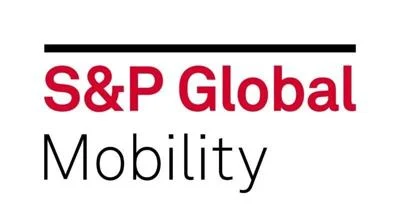
Sales in January 2025 U.S. Auto Market Start Strong, Says S&P Global Mobility
U.S. auto sales in January 2025 are projected to reach 1.15 million units, equating to a seasonally adjusted annual rate (SAAR) of 16.2 million units, according to S&P Global Mobility. While this marks a slight decline from the strong sales figures seen in November and December 2024, it still represents the fourth consecutive month in which the sales pace has exceeded the 16-million-unit mark. Despite factors that may have contributed to a slower start to the year, such as weather disruptions and inventory adjustments, analysts view the January sales result as a positive outcome for the industry.
Chris Hopson, principal analyst at S&P Global Mobility, noted, “Auto sales are expected to post a decent volume level in January. An uncertain auto demand environment awaits in 2025, as the industry and consumers digest potential policy changes from the new administration, but together with the inventory drawdown at the end of 2024, and weather impacts during the month, January sales should be viewed as a positive result.”
Increased uncertainty for 2025 stems from a combination of shifting consumer preferences, potential policy changes related to electric vehicles (EVs), and other regulatory factors that could affect consumer behavior and the industry’s overall trajectory. However, January’s results suggest that the market remains resilient, even amid these uncertainties.

Inventory Levels and Production Adjustments
A major factor contributing to the more cautious pace in January is the lower inventory levels entering 2025. According to S&P Global Mobility Retail Advertised Inventory data, the U.S. finished December 2024 with just 2.89 million vehicles in available retail advertised inventory, the lowest level since the first week of July 2024. This decrease in available inventory can be attributed to both the strong sales performance at the end of 2024 and planned reductions in production levels during December.
The industry had been struggling with inventory shortages for much of the past few years, driven by supply chain disruptions, particularly microchip shortages. Although these supply chain issues have improved somewhat, lower production levels in December still impacted the availability of vehicles in January. This combination of lower inventory and reduced production further highlights the challenges the automotive sector faces as it enters 2025.
Sales Breakdown and Market Trends
Looking closer at the sales figures, light vehicle sales for January 2025 are estimated to reach 1,150,600 units, up from 1,070,520 units in January 2024. However, compared to the 1,488,577 units sold in December 2024, this marks a noticeable decline. The SAAR for January 2025 is projected to be 16.2 million units, up from 15.0 million units in January 2024 but down from 16.8 million units in December 2024.
Breaking down the sales by vehicle type, light trucks (including SUVs and pickups) continue to dominate the market. In January 2025, light truck sales are expected to account for 13.1 million units on a SAAR basis, up from 12.0 million units in January 2024. On the other hand, passenger car sales remain relatively flat, with an estimated SAAR of 3.1 million units in January 2025, compared to 3.0 million units a year earlier.
Battery Electric Vehicles (BEVs) Continue to Gain Traction
The continued growth of battery-electric vehicle (BEV) sales is another important trend to watch in 2025. While the development of BEV sales remains part of the long-term outlook in S&P Global Mobility’s forecast, month-to-month volatility is expected, especially as both automakers and consumers await potential changes to BEV incentives at the start of the year.
In January 2025, BEV share of total U.S. auto sales is expected to be around 9.0%, which is consistent with the share seen in December 2024. While this percentage reflects a steady interest in electric vehicles, the potential for changes to federal incentives and policies related to EVs could affect consumer purchasing decisions and manufacturers’ strategies in the coming months.
About S&P Global Mobility
S&P Global Mobility provides critical insights driven by unmatched automotive data, empowering customers to anticipate change and make informed decisions. With its deep expertise, S&P Global Mobility helps businesses optimize operations, understand consumer behaviors, and plan for the future of mobility. As a division of S&P Global (NYSE: SPGI), a leading provider of credit ratings, benchmarks, analytics, and workflow solutions, S&P Global Mobility is committed to supporting organizations navigating the evolving automotive landscape.




